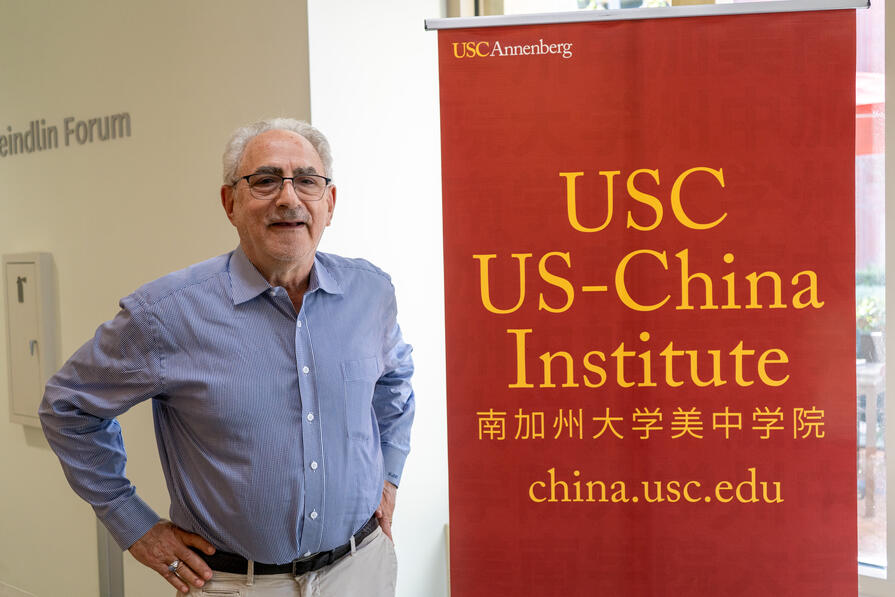Testimony to the House Foreign Affairs Committee
Click here to download the 93 page transcript of the House hearing.
Madam Chair and Members of the Committee, thank you for the opportunity to share my views on China’s maritime strategy and what it means for the future of the South China Sea.
In my judgment, China's recent assertiveness in the South China Sea is a harbinger of things to come. Beijing's seapower project and the enormous resources it has enjoyed have opened up new strategic vistas for Chinese leaders and military commanders. With larger and more capable seagoing forces at its disposal, Beijing is well positioned to fashion sophisticated strategies that will be more effective and equally difficult to counter. While such strategies do not—yet—portend the fundamental reordering of maritime politics in Southeast Asia, they will likely yield incremental dividends that advance China's larger aims at sea.
As a point of departure for this important and timely subject, I would like to assess how geography and power—both intellectual and material—inform Chinese maritime strategy. First, geography impels China to turn to the seas, particularly the South China Sea. It is an intensely nautical arena with only one great power—China—physically bounding its northern limits. Some of China's major industrial and financial hubs, notably those around the Pearl River Delta, are located along the shorelines of the South China Sea. The body of water is home to economic powerhouses, resources, shipping lanes, and potentially vulnerable chokepoints. Located at the junction of the Pacific and Indian Oceans, it is a critical thoroughfare for the transit of commercial goods, energy, and military power.
To read the rest of Yoshihara's testimony, click here.
Madam Chairman, Ranking Member Berman, distinguished members, thank you for inviting me to appear before your committee today to provide testimony on China as an emerging power in the South China Sea.
The South China Sea encompasses a portion of the Pacific Ocean stretching roughly from Singapore and the Strait of Malacca in the southwest, to the Taiwan Strait in the northeast. The United States has a great deal at stake in the South China Sea. China, Taiwan, Indonesia, the Philippines, Vietnam, Malaysia, and Brunei assert overlapping sovereignty claims over land features and adjacent waters in the South China Sea. Failure to peacefully manage and ultimately resolve these conflicting claims could result in spiraling tensions and military conflict.
The waters of the South China Sea are among the world’s primary trade arteries. Over half of the world's merchant fleet, by tonnage, sails through those sea-lanes each year. In addition, the South China Sea region contains an abundance of fish, and potentially contains significant quantities of oil and gas resources strategically located near large energy-consuming countries.
Skirmishes took place periodically in the South China Sea from the mid-1970s to the mid-1990s. A decade of relative quiescence followed, but tensions have flared since 2007, with a marked increase in incidents and provocations. The main causes of growing tensions are 1) rising interest in surveying and exploiting the South China Sea’s oil and gas deposits; 2) intensified competition for fish as fish stocks in close proximity to coastlines are depleted; 3) the May 2009 deadline for submission of claims by coastal states of extended continental shelf rights beyond 200 nautical miles to the UN Commission of the Limits of the Continental Shelf; and 4) growing nationalistic pressures on governments to defend their territorial and maritime claims.
To read the rest of Bonnie Glaser's testimony, click here.
With reduced political tensions across the Taiwan Strait between Beijing and Taipei and the military balance having firmly shifted in the direction of the mainland, Beijing feels it can turn its attention to some of the other regional challenges it faces, including those in the South China Sea.
It is doing so for several reasons. The first is that the People’s Republic of China (PRC) believes, based on its wide-spread diplomatic recognition in the international community, it has rightfully inherited the sovereignty claims in the South China Sea-- known widely as the “9-“ or “11-dashed line”--from the Republic of China, whose own claim reportedly dates back to the late 1940s. (It is worth noting that Taipei retains its claim to the South China Sea, too, dating from the same Kuomintang (KMT) cartographic work from the 1930s.)
Second, being the world’s largest energy consumer, Beijing is also deeply interested in the oil and natural gas which may lie beneath the South China Sea seabed. According to some estimates the energy resources beneath the seabed may be substantial. The PRC’s interest in fishing rights in the South China Sea is also strong.
Third, Beijing is concerned about the security of its sea lines of communications (SLOC) in the South China Sea that carries its commerce in energy, natural resources and goods. China’s anxiety about this is sometimes referred to as the “Malacca Strait dilemma,” noting its concern about the vulnerability of its seaborne trade, which transits the world’s busiest waterway and often sails through this major maritime chokepoint that connects the Pacific and Indian Oceans.
Fourth, some in the Chinese elite view the United States as a declining power, which will ultimately be replaced by the PRC in the region and atop the international system. While the United States has been engaged over the last ten years in the Middle East and South Asia, the PRC has sought to fill perceptions of a growing power vacuum in Asia, especially in South East Asia.
Lastly, China has made great strides in developing the tools of national policy and power necessary to become more assertive in the South China Sea, based on its increasingly powerful economy, political stature, and military might, especially its navy.
To read the rest of Peter Brookes' testimony, click here.
China’s rise and its ambitions to make up for past centuries of humiliation and become the dominant power in East and Southeast Asia is unavoidably the most important geostrategic issue facing the United States in the 21st Century.
For the United States as well as China’s neighbors, the most challenging aspect of its rise is a lack of commitment to a rules-based international system except as it serves its perceived national interests. This aspect of Beijing’s policies and actions is nowhere more apparent and challenging than in the case of the South China Sea, which is the locus of serious and potentially volatile maritime territorial disputes.
Of particular concern to the United States, which maintains a significant military presence in the region, is that China is seeking to redefine the very definition of international waters—traditionally known as the “high seas”—by asserting rights of sovereignty where none exist. In pursuit of this policy Chinese maritime patrol vessels have engaged in dangerous maneuvers and other forms of harassment against US naval vessels in international waters adjacent to the Chinese coast.
While the Chinese government has negotiated and committed to numerous international agreements based on prevailing international laws, rules and practices, its strong preference is for bilateral agreements based on political relationships and power disparities that favor China rather than multilateral agreements that are based on established international rules and norms.



